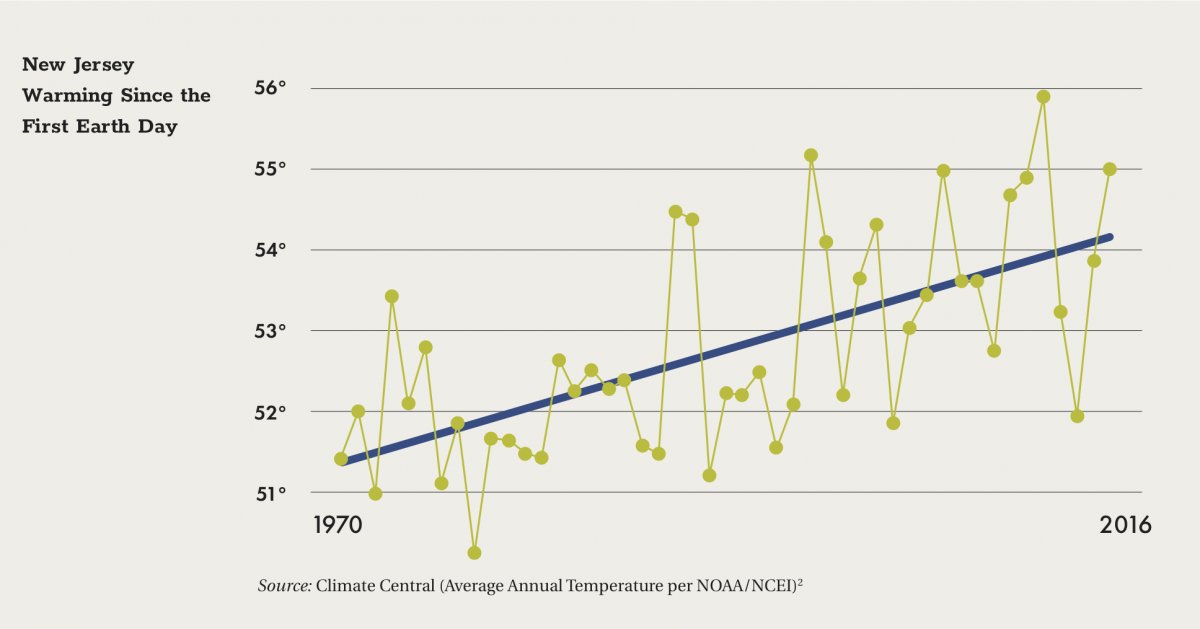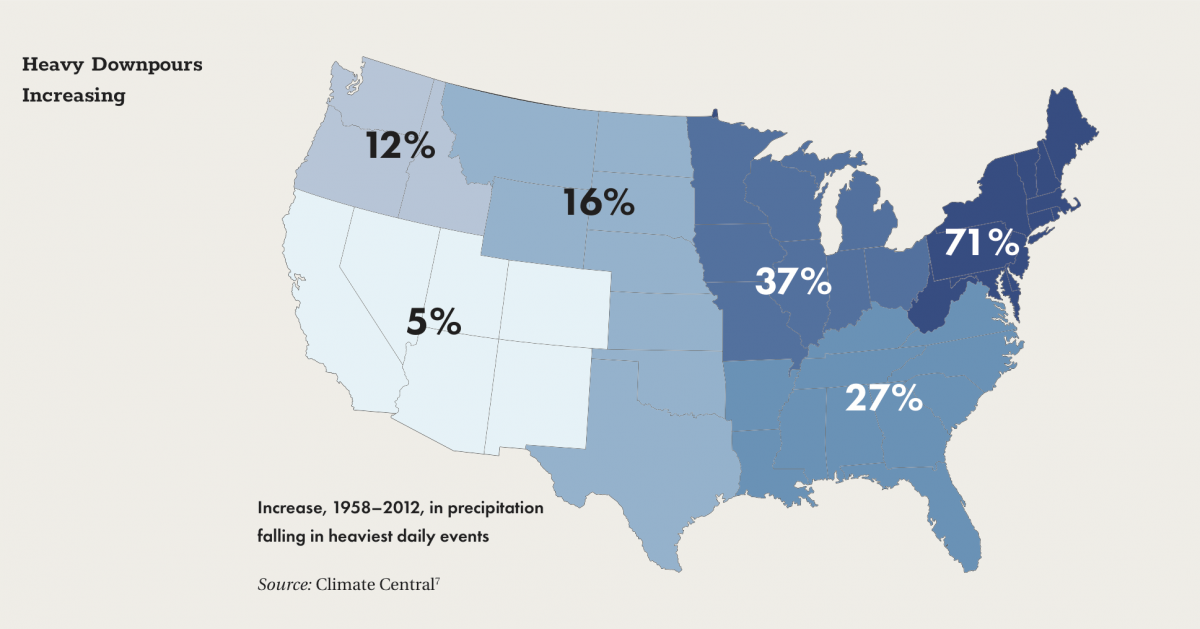Facing serious dangers from climate change, New Jersey needs more than ever to restore protecting its environment to the prominent role necessary for a healthy, secure future.
Nearly 50 years ago, New Jersey recognized substantial threats to the health of its residents and to the state’s economic well-being and became one of the first states to create a cabinet-level department charged with safeguarding the environment and natural resources. The state became a national leader in such areas as regulating land use to preserve open space and guide development, protecting air and water quality, promoting recycling, identifying and remediating hazardous waste sites, and keeping the public safe from toxic substances.
Now, our economic and physical health depend on devoting attention, leadership, and financial resources to adopt and execute common-sense policies in four key areas that address the scientific realities of climate change.
- Energy Policy
- Water Supply and Quality
- State and Regional Planning
- Environmental Justice1
Each of these areas is important on its own. Together they should be part of a sustained, well-coordinated effort to prevent climate change from being disastrous for New Jersey.
If a single public policy issue embodies the phrase “Think globally, act locally,” it is climate change. Globally, climate change threatens humanity’s existence.
The overwhelming scientific consensus is that an alarming rise in average temperature over the past century is due to human activity—especially burning fossil fuels (oil, coal, natural gas), which increases carbon dioxide and other greenhouse gases in the atmosphere. New Jersey experiences climate change in the form of increased rainfall, higher temperatures, rising sea level, and an increase in the frequency and severity of extreme weather events. Average annual temperatures, after creeping upward for most of the 20th century, jumped by 1.2 degrees Fahrenheit in the first decade of the 21st century, to an average of 53.9°F in the period 2000-2010,3 from 52.7°F in 1971-2000. The number of days over 90°F rose by 36% since 1949.4 January through June 2016 was the warmest six-month period ever recorded, with average temperatures 1.3°F warmer than in the late 1800s.5

Researchers predict hotter, wetter weather. New Jersey’s mean annual temperature is expected to increase by 3 to 5 degrees Fahrenheit by the 2050s, and by 4 to 7.5 degrees Fahrenheit by the 2080s. Summers in the Garden State will be as warm as they are in Alabama today. Precipitation is expected to increase by 10% to 20%.6 Such changes in temperature and rainfall, which might not seem dramatic, would significantly affect agriculture and plant and animal life, and exacerbate both flooding and droughts.

Dense development, rising seas, and other factors make New Jersey’s coast highly vulnerable to climate change. The sea level along the New Jersey coastline has risen by about 1.5 inches every 10 years over the past 100 years—nearly twice the global average. And the sea level is projected to rise between 1.0 and 1.8 feet by 2050 regardless of future greenhouse gas emissions, with a worst-case scenario of 2.8 feet.8 The state Department of Environmental Protection predicts the large storms that occur every 20 years will come every five years by 2050, greatly increasing the potential for coastal damage. By the end of the century, 1% to 3% of New Jersey’s shoreline is likely to be lost to rising sea levels, and occasional flooding will inundate 6.5% to 9% of the state’s coastal area.9
Altered rainfall patterns associated with climate change are likely to increase the intrusion of saltwater into the Delaware River and Bay and coastal aquifers, threatening New Jersey’s drinking water.
Because many predictions of the dangers from climate change extend over decades, it can be difficult to get policymakers to take immediate and decisive action. For elected officials whose terms will expire long before the most severe predicted consequences, the easiest decision often is to do nothing. Today, that is not good enough. Much more needs to be done in New Jersey to confront climate change.
Specifics are described in the sections below. In many cases, these measures have cross-cutting relevance beyond the section in which they are listed. The magnitude of the threats that climate change poses to New Jersey creates overlapping areas of concern requiring aggressive steps.